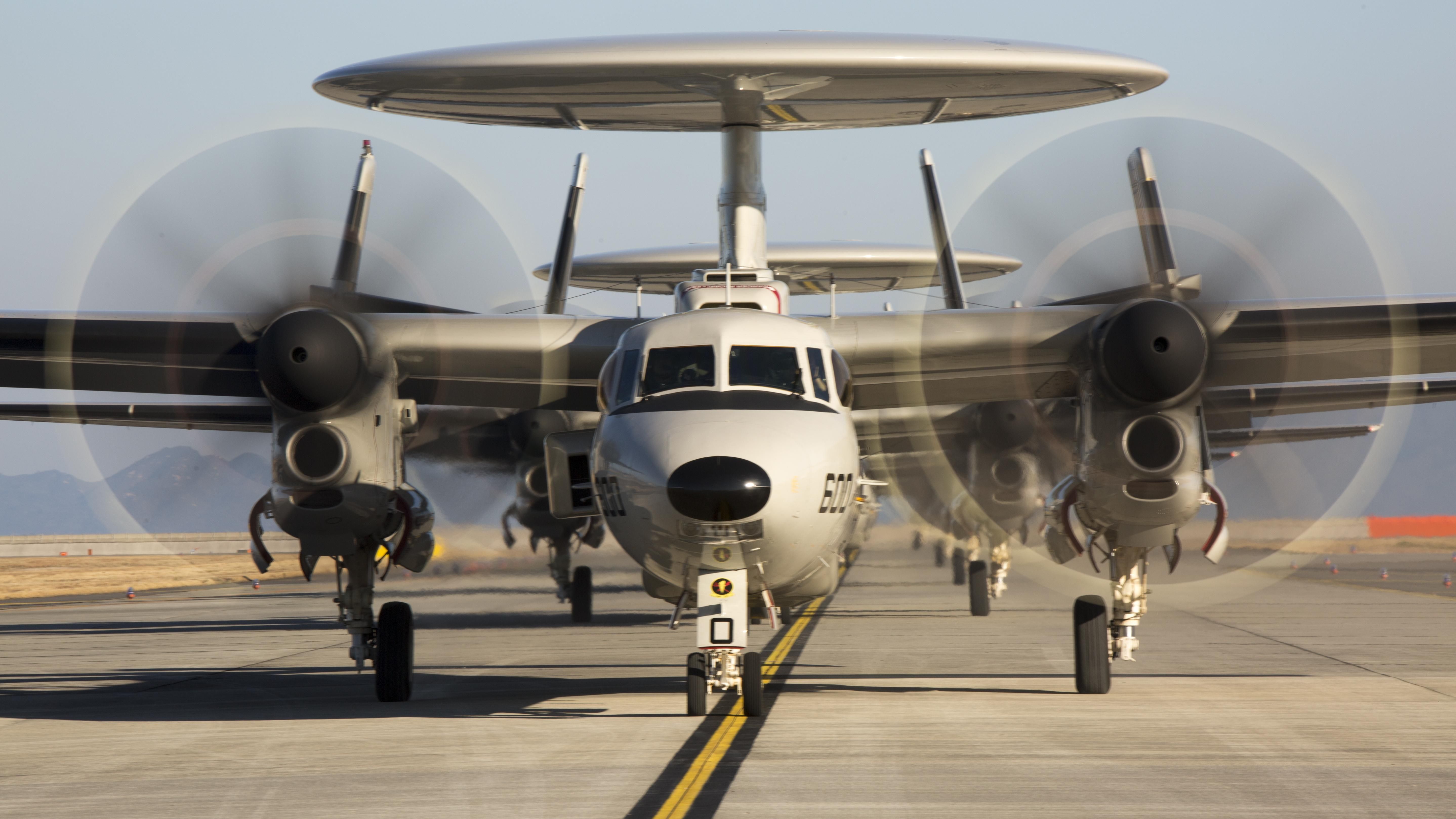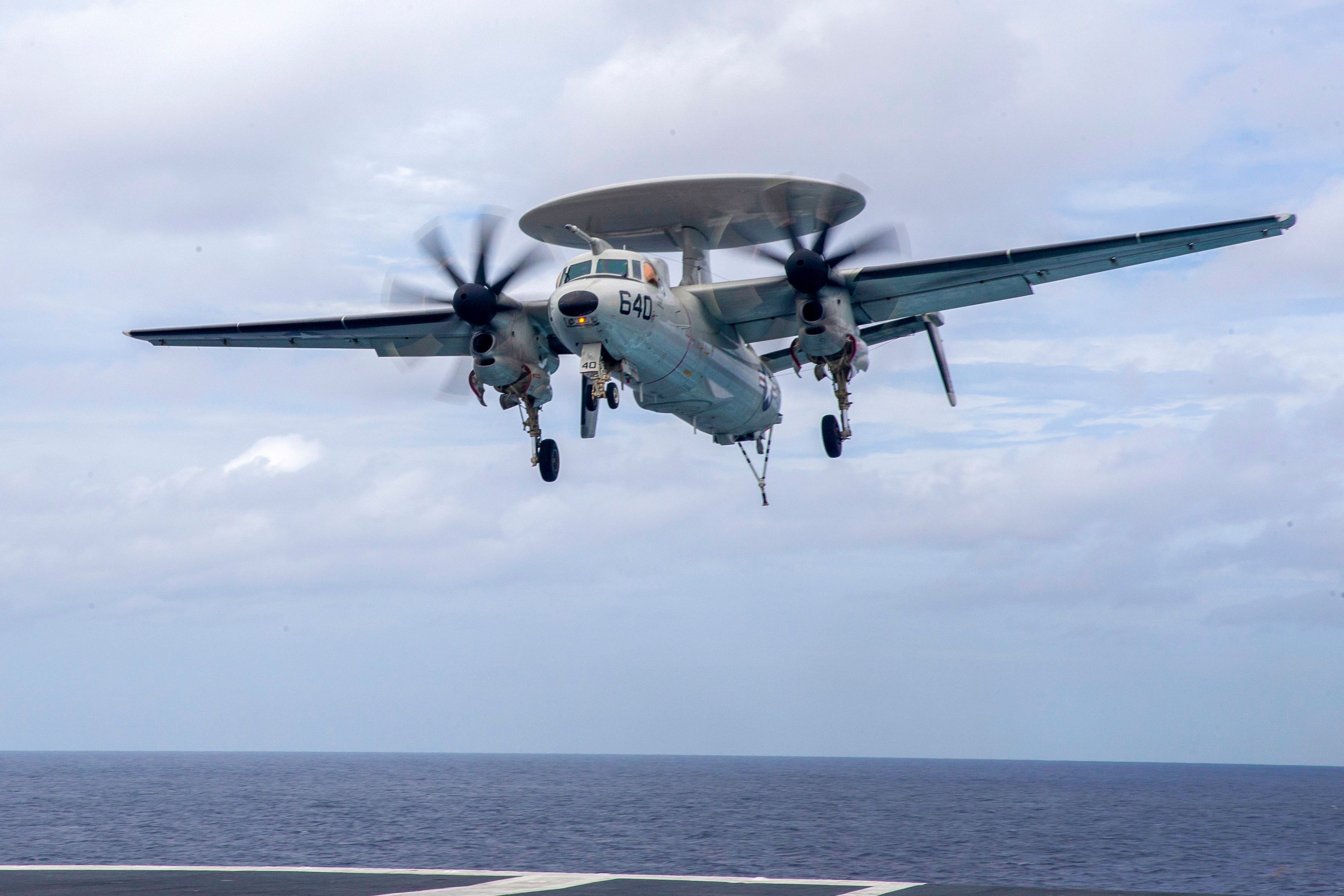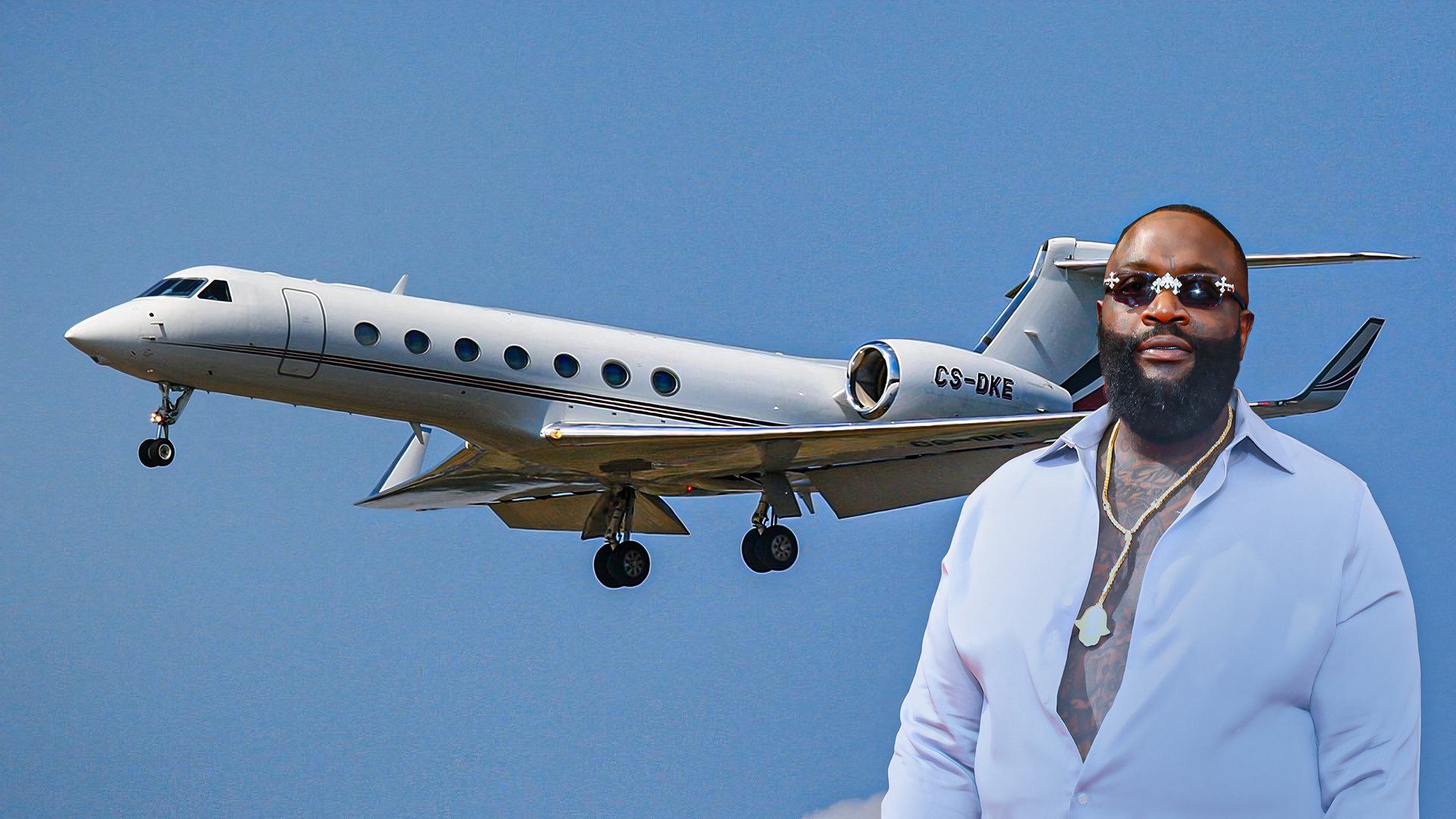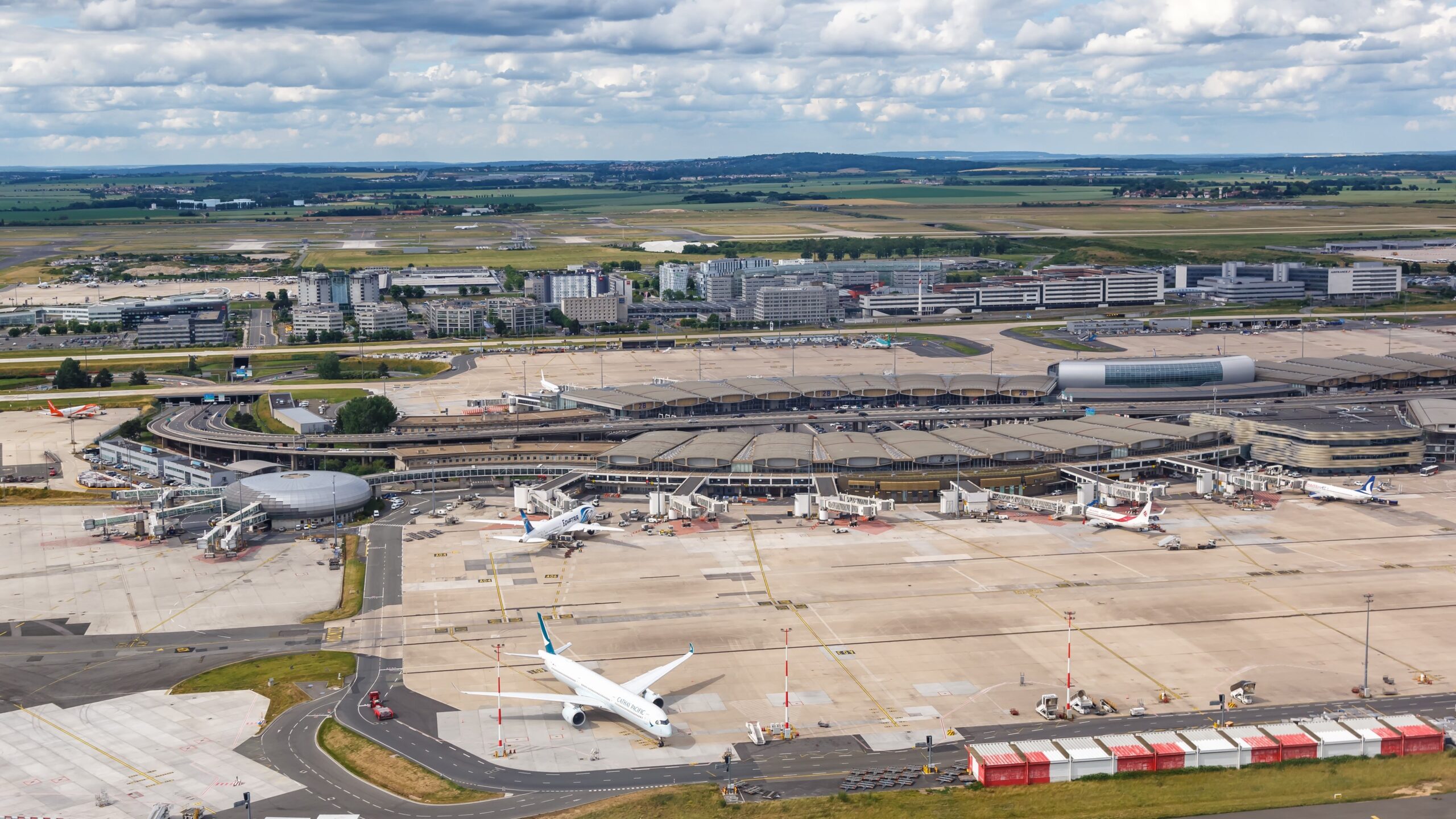In the realm of modern naval warfare, the Northrop Grumman
E-2D Hawkeye is an essential component of the US Navy’s Carrier Strike Group air defense as well as power projection from sea to the shore. The primary tactical role of the E-2 is critical surveillance to enhance the strike group’s ability to detect and respond to aerial threats while simultaneously providing command and control to land, sea and air units.
The E-2D is the most advanced carrier-based airborne early warning and control aircraft. It is equipped with cutting-edge radar technology
rivaling that of shipborne AEGIS systems.
As adversaries deploy increasingly sophisticated aircraft and missiles, the Hawkeye plays a crucial role in ensuring air superiority. Acting as a command and control center, it enables real-time intelligence sharing and coordination among CSG units, bolstering the overall effectiveness of the Carrier
Strike Group. By integrating comprehensive situational awareness and strategic defense measures, the E-2 protects naval assets and reinforces the US Navy’s commitment to maritime security.
Advanced Hawkeye
The latest generation E-2D from Northrop Grumman commenced fleet service in 2014 with an initial projected inventory of 75 aircraft. The Advanced Hawkeye features highly advanced radar, communications and electronic warfare technology. The primary system is its AN/APY-9 radar
system which offers long-range and 360-degree surveillance, simultaneously enabling precise tracking of many airborne threats. The aircraft’s modernized cockpit includes advanced displays and improved avionics, facilitating real-time data sharing. Additionally, the Hawkeye’s dual-engine turboprop
design enhances speed and fuel efficiency, while its upgraded electronic warfare capabilities provide robust defense against emerging threats. These innovations make the E-2D a critical asset for ensuring air superiority and effective command-and-control operations for the US Navy
. The production line in Florida has been consistently delivering new units since 2014 and official specifications are listed as:
- Overall Length: 57 ft. 8.75 in
- Wing Area: 80 ft. 7 in
- Weight (Empty): 40,484 lbs
- Speed: 300+ kts
- Ceiling: 37,000 ft.
-
Power Plant: Two
Rolls-RoyceT56-A-427A Turboprop engines (5100 shp each)
- Sensors: Fully integrated open architecture system
- Crew: five consisting of two pilots and three mission systems operators with the option for the co-pilot to act as the fourth mission systems operator.
- Prime Contractor: Northrop Grumman
Beginning in 2020, the Hawkeye received a major upgrade in the form of a fuel probe. This enabled the aircraft to perform aerial refueling (AR) and thereby dramatically improved the station time and mission flexibility of the fleet’s eye-in-the-sky.
Photo: US Navy
Hummer
Also known as the Hummer for the distinctive sound of its 8-bladed twin-turboprop engines, the E-2 has been a staple on the decks of US Navy flat-tops for over six decades. Thanks to its central role in the Carrier Air Wing, the E-2 has been instrumental in many notable military
operations since its inception. One of its most significant service moments was during Operation Desert Storm in 1991, where the Hawkeye provided critical airborne early warning and control, enabling the coordination of coalition air forces and contributing to the rapid establishment of air superiority.
During deployment in Operation Iraqi Freedom in 2003, the E-2 played a crucial role in managing air traffic and detecting enemy aircraft
to ensure the safety of US and allied forces. In a demonstration of versatility, the E-2 has also participated in humanitarian missions, such as during Hurricane Katrina in 2005, where aircraft assisted in search and rescue operations.
In recent years, the E-2 has been involved in operations in the Indo-Pacific region, monitoring potential threats and enhancing regional security. Its continuous upgrades, including advancements in radar and communication systems, have allowed it to adapt to modern warfare challenges. The E-2 Hawkeye remains a cornerstone, proving its worth in both combat and peacetime missions over its distinguished service history.
Eye in the Sky
The US Navy air controller
plays a critical role in the operational success of a Carrier Strike Group (CSG) by ensuring effective air defense and coordination among various aircraft. While the Hawkeye aircrew provides the central source of air control for the CSG, others are positioned on board the aircraft carrier and fleet support vessels. These controllers manage the airspace around the strike group, which often includes multiple aircraft of different branches or even nations engaged in combat operations.
Air controllers use advanced radar systems, such as those aboard the E-2 Hawkeye, to detect incoming threats and track friendly aircraft. They provide real-time situational awareness, relaying vital information to fighter pilots
and coordinating their missions. Controllers issue directives for intercepting enemy aircraft, managing the launch and recovery of aircraft, and facilitating refueling operations.
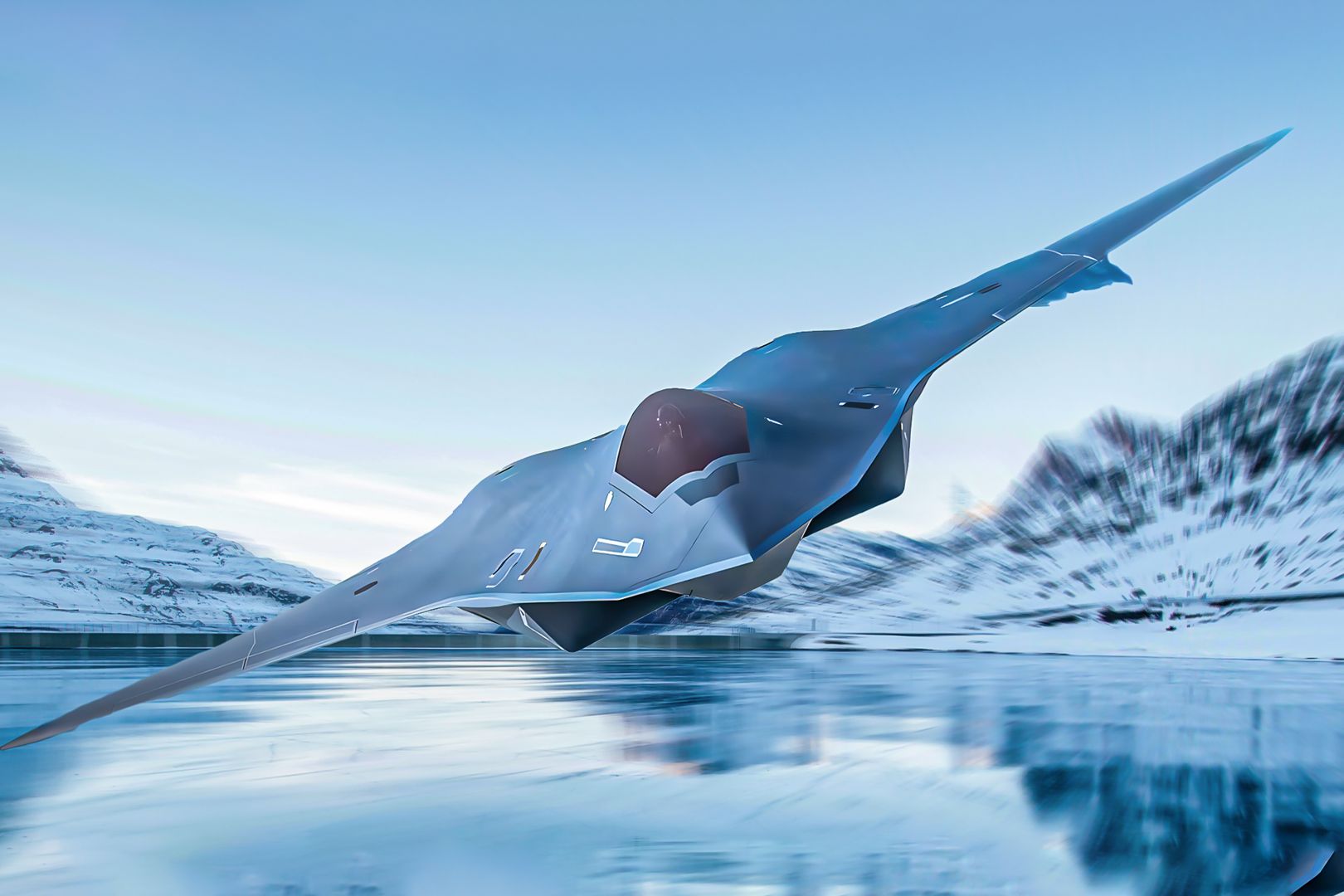
US Navy Commits To 6th-Gen Fighter Development Despite USAF Delays On NGAD Program
The US says that producing the advanced F/A-XX fighter jet remains a priority and is looking to award a contract for it.
The Naval Flight Officers (NFO’s) and Pilots aboard the Hawkeye also communicate with other branches of the military or allied forces to ensure a collaborative response to aerial threats.
Air controllers assess the tactical situation during combat, make split-second decisions, and adapt strategies as needed.
They provide critical data and instructions via verbal radio communications and sophisticated data-network capabilities that allow sharing between land, sea or air units. Their ability to maintain clear communication and situational awareness is essential for protecting the strike group and achieving mission objectives, making air controllers a vital component of naval aviation operations. Their expertise is key to maintaining air superiority and the overall mission success of the Carrier Strike Group.
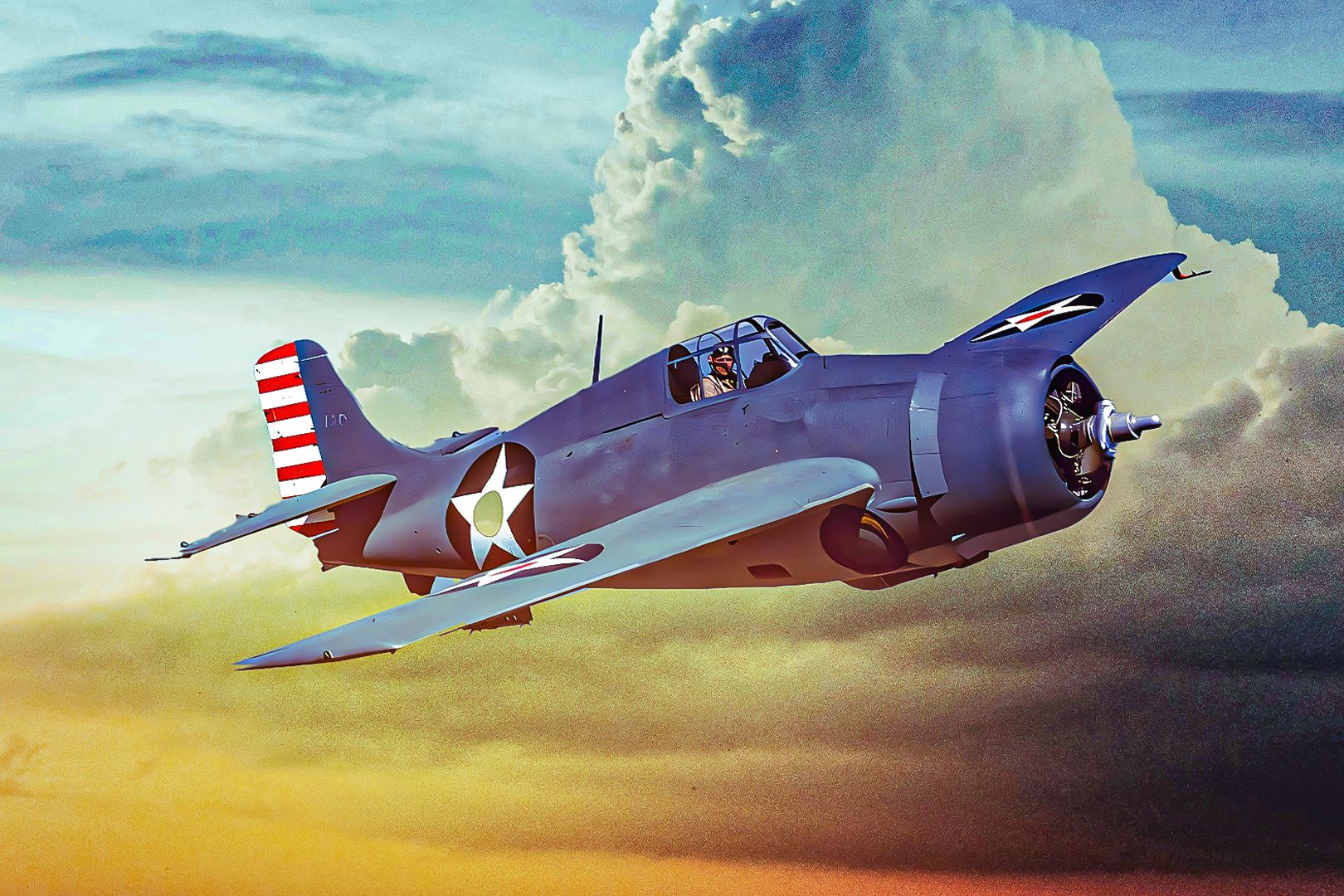
All The Cats: The US Navy’s Historic Grumman Aircraft
Cats are natural predators of birds, but that didn’t stop Grumman from naming multiple mechanical warbirds for predatory felines.


